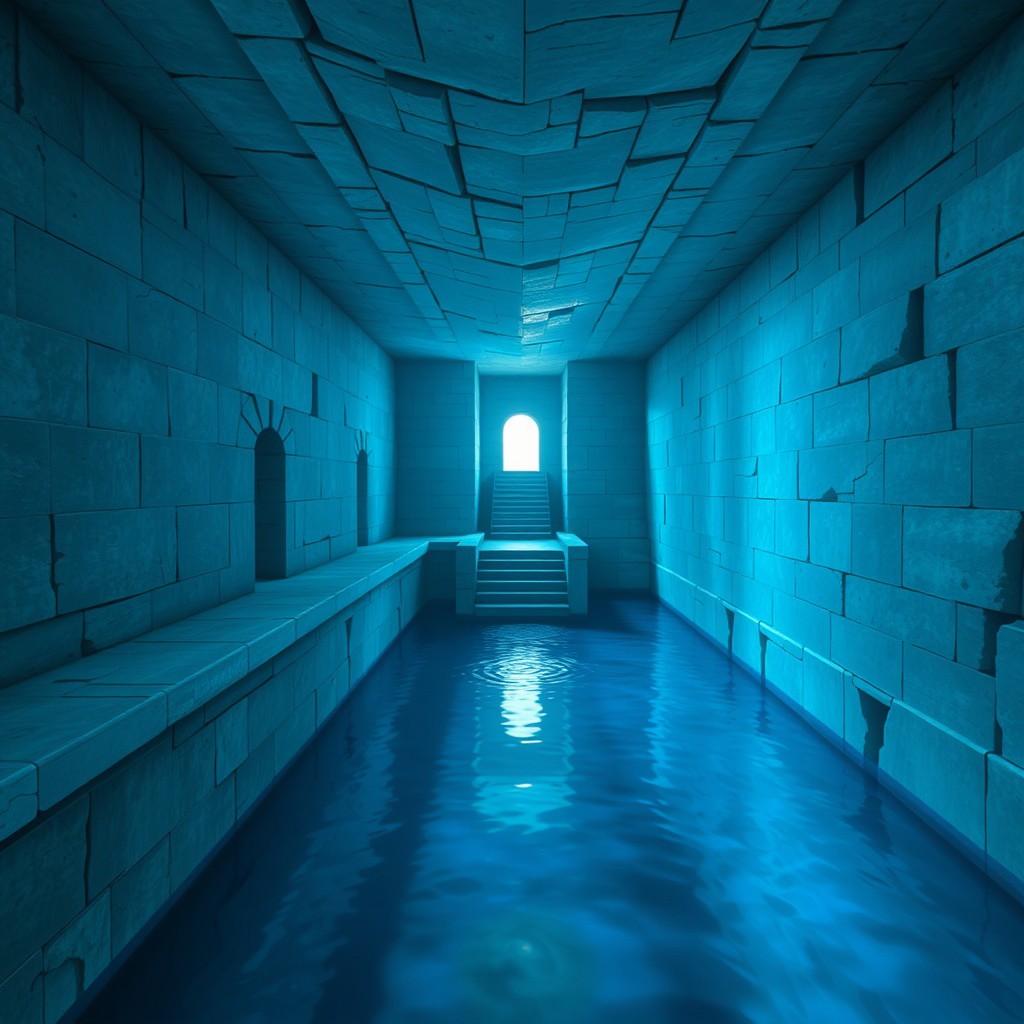A liminal space within the Water Temple from The Legend of Zelda: Ocarina of Time—a vast, submerged labyrinth where time and space feel distorted. The walls, made of smooth, ancient stone, are bathed in a cold, blue glow, their surfaces warped by the shifting reflections of the water. Silence dominates, broken only by the muffled sound of distant, unseen currents. The water level is unnatural—too still, too perfect, as if frozen in time. Endless hallways stretch in all directions, their depths obscured by a soft, misty blue haze. Staircases disappear into the water below, leading to unseen chambers where gravity seems meaningless. The liquid surface reflects the surroundings too crisply, almost like a mirror, creating an eerie sense of being trapped between two worlds. No creatures stir, yet the feeling of being watched is unshakable. The temple feels abandoned, yet undeniably alive, its endless corridors shifting with the movement of the water. There is no beginning, no end—just the sensation of being lost in an infinite, drowned dream, forever suspended in a quiet, forgotten abyss.
